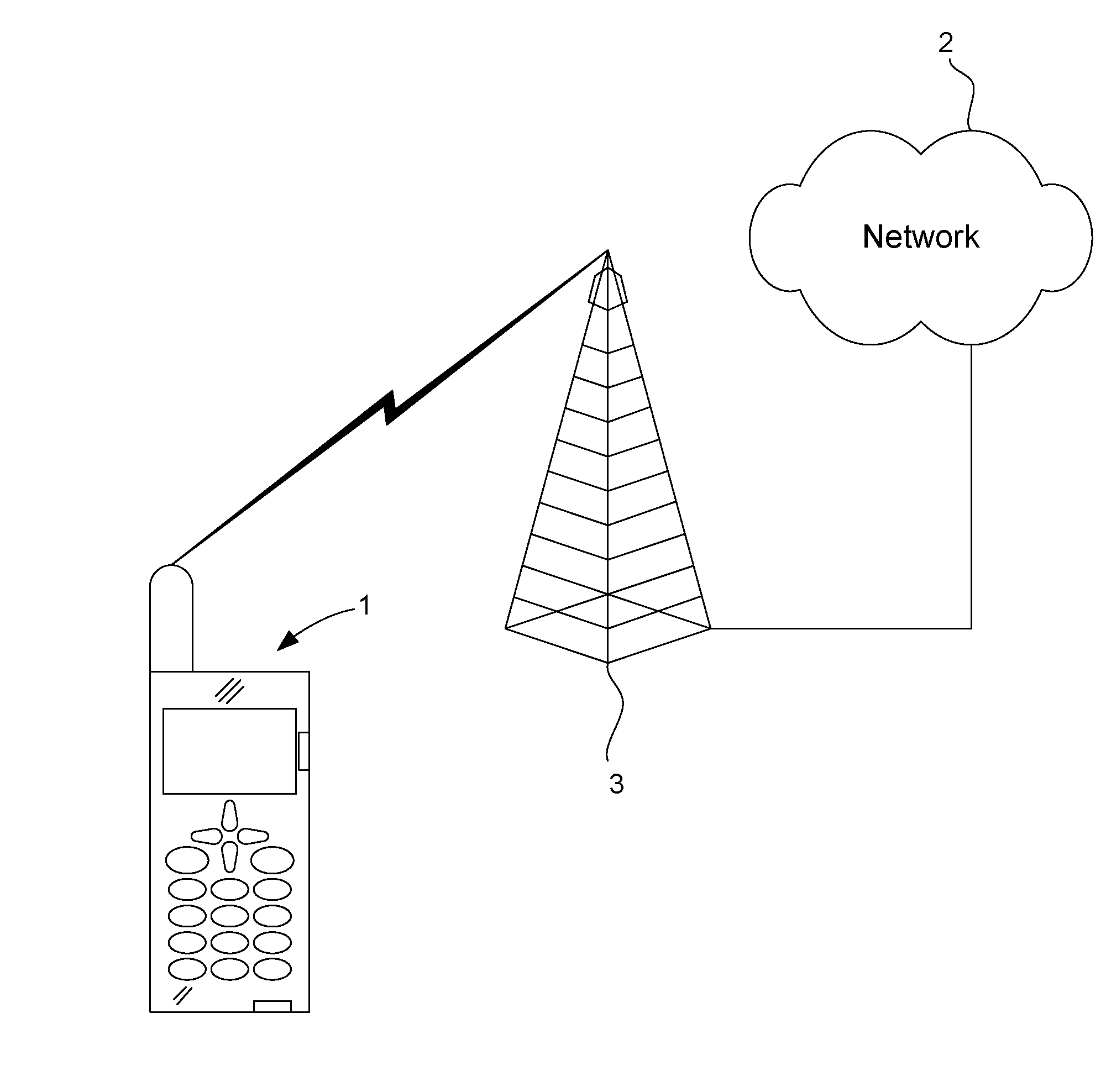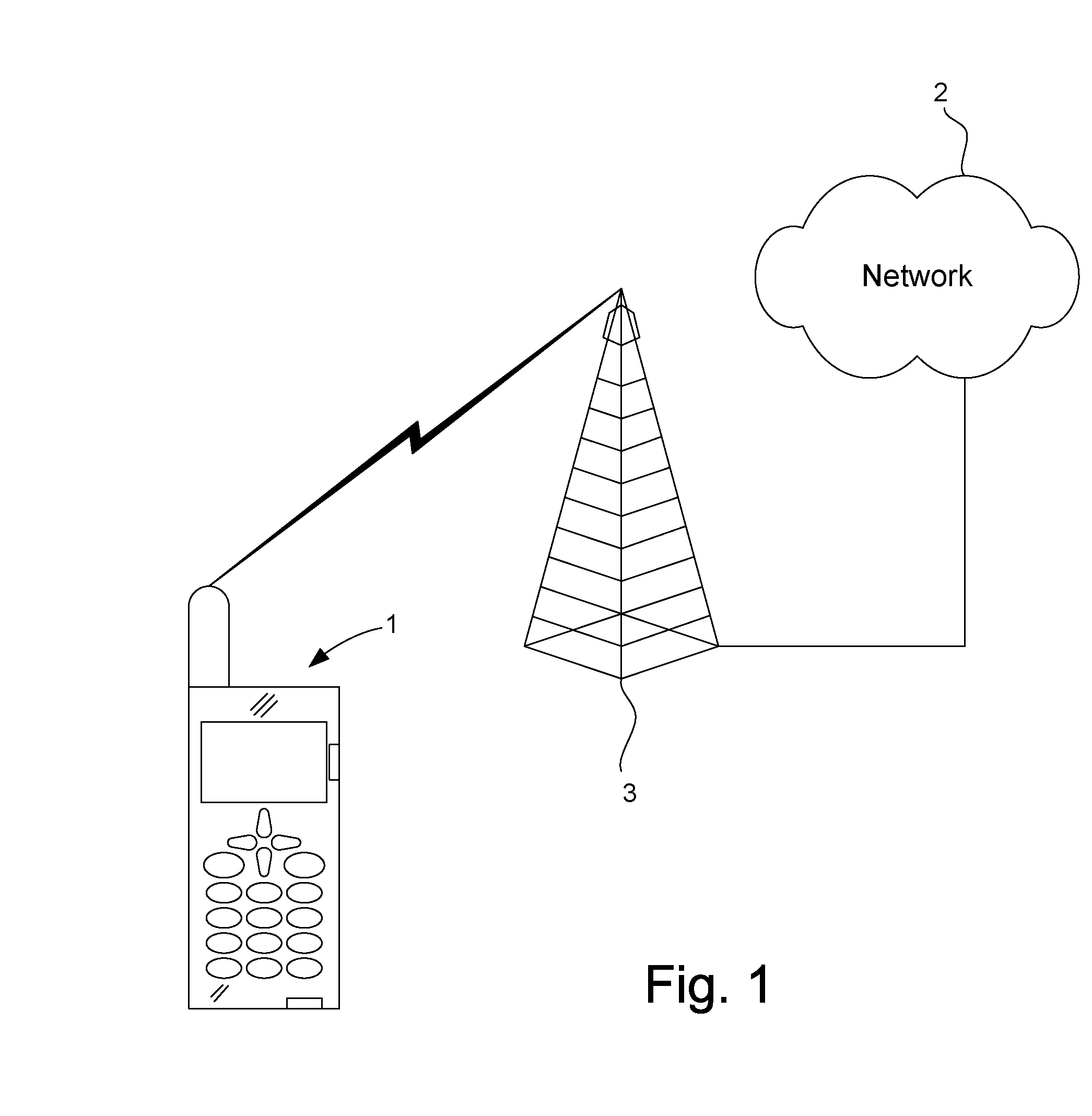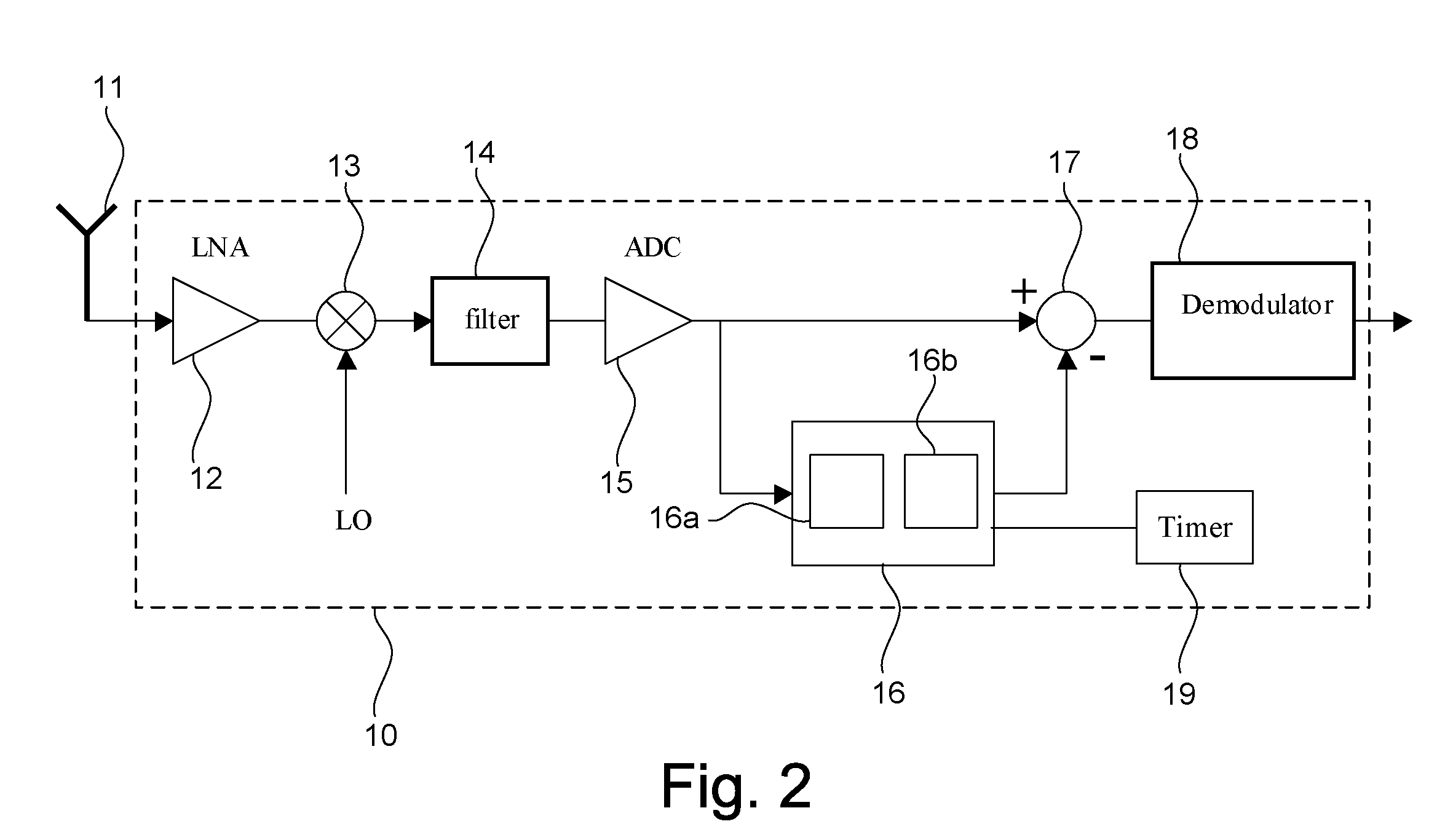Method and device for communicating a signal
- Summary
- Abstract
- Description
- Claims
- Application Information
AI Technical Summary
Benefits of technology
Problems solved by technology
Method used
Image
Examples
Embodiment Construction
[0049]FIG. 1 illustrates a wireless communication apparatus 1, which is adapted to communicate with a communication network 2 through a base station 3. Signals may be communicated in uplinks as well as in downlinks. Traffic data may e.g. be communicated over a channel of a first channel type, such as a traffic channel (TCH). Periodic events may be communicated over a channel of a second channel type, such as a random access channel. A periodic event may e.g. be a sign-of-life indication (ping signal) or an access request, such as a random access (RA) request. Another example of a period signal is a broadcast signal in the downlink to allow the wireless communication apparatus 1 to synchronize to the communication network 2. A synchronization channel may comprise a separate Frequency Control Channel (FCCH) and timing Synchronization Channel (SCH), such as is used in GSM, to allow the wireless communication apparatus 1 to adjust its frequency and symbol / frame timing. Alternatively, a ...
PUM
 Login to View More
Login to View More Abstract
Description
Claims
Application Information
 Login to View More
Login to View More - R&D
- Intellectual Property
- Life Sciences
- Materials
- Tech Scout
- Unparalleled Data Quality
- Higher Quality Content
- 60% Fewer Hallucinations
Browse by: Latest US Patents, China's latest patents, Technical Efficacy Thesaurus, Application Domain, Technology Topic, Popular Technical Reports.
© 2025 PatSnap. All rights reserved.Legal|Privacy policy|Modern Slavery Act Transparency Statement|Sitemap|About US| Contact US: help@patsnap.com



